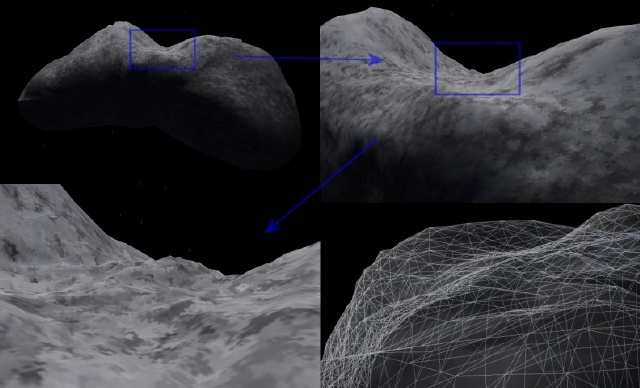 |

Submitted by , posted on 16 February 2001
|
 |

Image Description, by

I have been working on a spherical ROAM renderer to render planet-sized
objects. When the NEAR spacecraft made its brave plummet today, I began
wondering if my renderer could handle a very *non*spherical object --
namely, the dog biscuit-shaped asteroid Eros.
I found an elevation map of the asteroid on this site.
Eros is a very irregularly-shaped object -- its most distant point is 14
km from the center and its closest point is only 2 km! Quite an
interesting thing to see if a renderer built for spherical objects could
handle it.
After a few tweaks, the thing actually worked! What you are looking at
is a real-time flyby of the asteroid, about 6000-7000 triangles per
frame. I mapped the rock with a generic asteroid texture, and although
you can't see it well in these shots the engine generates unique detail
textures as you approach the surface. The thing runs about 9-25 FPS on
my TNT2 (best when far away, in the first frame) but keep in mind it's
written entirely in Java and I haven't finished optimizing :)
This probably isn't the best way to do LOD on an irregular object like
this. But it shows that an algorithm designed for a specific purpose
(ROAM and flatland) can be perverted into something completely different
yet useful!
|
|

